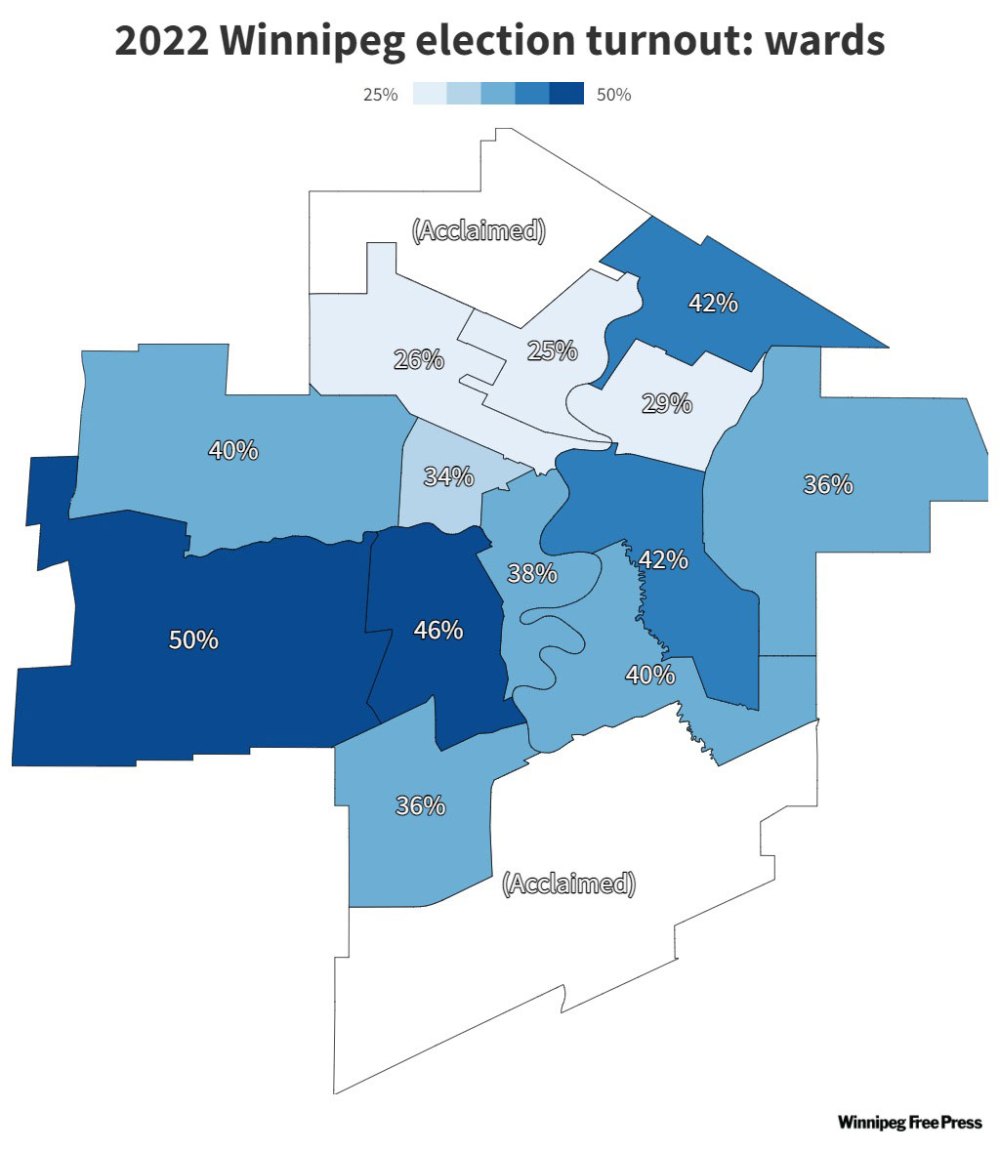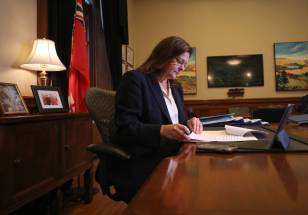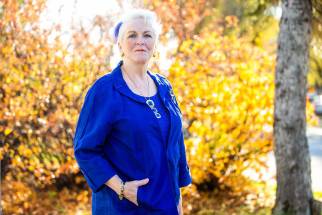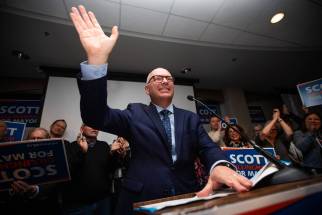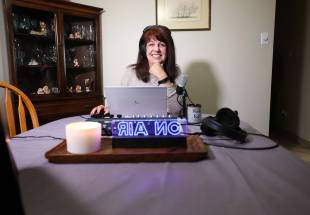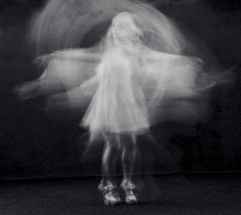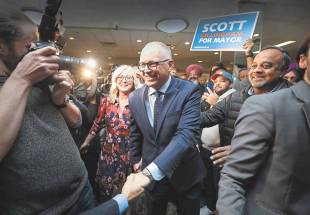Mynarski posts city’s lowest eligible voter response
Read this article for free:
or
Already have an account? Log in here »
To continue reading, please subscribe:
Monthly Digital Subscription
$0 for the first 4 weeks*
- Enjoy unlimited reading on winnipegfreepress.com
- Read the E-Edition, our digital replica newspaper
- Access News Break, our award-winning app
- Play interactive puzzles
*No charge for 4 weeks then price increases to the regular rate of $19.00 plus GST every four weeks. Offer available to new and qualified returning subscribers only. Cancel any time.
Monthly Digital Subscription
$4.75/week*
- Enjoy unlimited reading on winnipegfreepress.com
- Read the E-Edition, our digital replica newspaper
- Access News Break, our award-winning app
- Play interactive puzzles
*Billed as $19 plus GST every four weeks. Cancel any time.
To continue reading, please subscribe:
Add Free Press access to your Brandon Sun subscription for only an additional
$1 for the first 4 weeks*
*Your next subscription payment will increase by $1.00 and you will be charged $16.99 plus GST for four weeks. After four weeks, your payment will increase to $23.99 plus GST every four weeks.
Read unlimited articles for free today:
or
Already have an account? Log in here »
Hey there, time traveller!
This article was published 28/10/2022 (1138 days ago), so information in it may no longer be current.
While political experts are lamenting the dismal 37.5 per cent voter turnout in Wednesday’s municipal election, participation was even lower in some Winnipeg council wards.
Eligible voter participation ranged between 25.2 per cent in Mynarski and 49.6 per cent in Charleswood-Tuxedo-Westwood.
In Mynarski, low turnout has become a persistent problem, according to Ross Eadie, who was re-elected to the seat he’s held since 2010.
“There are areas in my ward, which are lower voter turnout, because there’s a lot of people moving and they’re struggling (with poverty),” Eadie said Friday.
The councillor-elect said many area residents rent homes and move often. His campaign had a tough time reaching past supporters to get out the vote, with many phone numbers disconnected between elections, he said.
MIKE DEAL / WINNIPEG FREE PRESS FILES “There are areas in my ward, which are lower voter turnout, because there’s a lot of people moving and they’re struggling (with poverty),” Ross Eadie said Friday.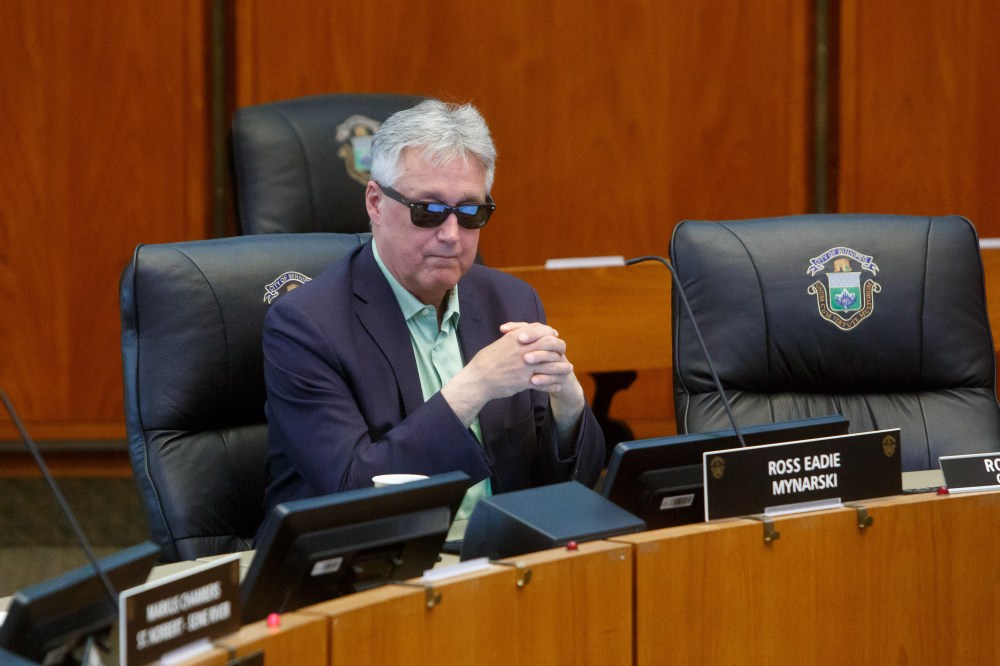
Eadie said the COVID-19 pandemic added to the challenge of reaching out to residents, as many stayed home more often.
“When people see politicians (out and about) representing them, they feel they need to go out and vote,” he said.
An anti-poverty advocate said wards with the highest poverty rates often tend to have low voter turnout, due to several challenges.
“I really think it comes down to the fact that low-income people have less access to resources, to helping them find identification or their birth certificate. It feels like we’re at a disadvantage,” said Desiree McIvor, a spokesperson for Make Poverty History Manitoba, who lives in North Point Douglas.
“It puts people in poverty at a disadvantage because some of them don’t have their IDs (to show at voting stations).”
McIvor said low-income and single-parent families can also struggle to find child care to go out to vote, while those living in poverty may also devote much of their time just to meet their basic needs, which can also prevent them from heading to the polls.
On top of expanding efforts to overcome those barriers, McIvor said she also believes further reconciliation efforts could help ensure better voter turnout.
“In (a lot of lower-turnout) neighbourhoods, (there are) a lot of concentrated Indigenous populations. There’s a disconnect with being able to trust the government in general… It all comes down to reconciliation and fixing that previous hurt that happened.”
While the city’s website does list identification as a voter requirement, measures are in place to make it easier to vote for those who don’t have it, said Andrew Poitras, manager of the decision making process for the city clerk’s department.
For example, if two people live at the same address, are both on the voter’s list but only one of them has ID, the person with ID can fill out an oath on behalf of the other, clearing the way for that individual to vote.
Voting is also possible for those with no fixed address or identification.
“The option for them would be to fill out an oath at the poll stating that they have no fixed address and no identification and those people would have to vote at the place or the shelter or (wherever) they most frequent or consider to be their home,” said Poitras.
MIKE DEAL / WINNIPEG FREE PRESS FILES “Obviously, we’d all like to see more participation. It is alarming when only that percentage of people vote,” said Brian Mayes.
Councillor-elect Brian Mayes, whose St. Vital ward logged a 39.8 per cent voter turnout Wednesday, said he was also surprised by the number who didn’t cast ballots.
“Obviously, we’d all like to see more participation. It is alarming when only that percentage of people vote,” said Mayes.
While his ward recorded slightly more interest than the city-wide average Wednesday, Mayes was first elected to council through a 2011 byelection, when just 20 per cent of eligible voters cast ballots. No matter what turnout occurs in each election, Mayes said his focus remains to reach out to as many constituents as possible through meetings, town halls and door-knocking.
Mayes said he initially thought the wide-open mayoral race (11 candidates, no incumbent) would trigger a surge in voter interest, but he saw less enthusiasm at the doorsteps this year than 2014, an election under similar circumstances.
He suspects COVID-19 may have convinced some voters to stay home.
“I was startled by the number of people who would say at the door, ‘I can’t open (the door). I’ll only talk to you through the doors because I have COVID.’ It’s still out there. And maybe people were worried about being in the indoor space (to cast a ballot) and (the risk of) contracting it,” said Mayes.
Voter participation levels also varied widely among school divisions, with ward-specific turnout ranging between 20.6 per cent and 50.6 per cent.
joyanne.pursaga@freepress.mb.ca
Twitter: @joyanne_pursaga

Born and raised in Winnipeg, Joyanne loves to tell the stories of this city, especially when politics is involved. Joyanne became the city hall reporter for the Winnipeg Free Press in early 2020.
Our newsroom depends on a growing audience of readers to power our journalism. If you are not a paid reader, please consider becoming a subscriber.
Our newsroom depends on its audience of readers to power our journalism. Thank you for your support.

